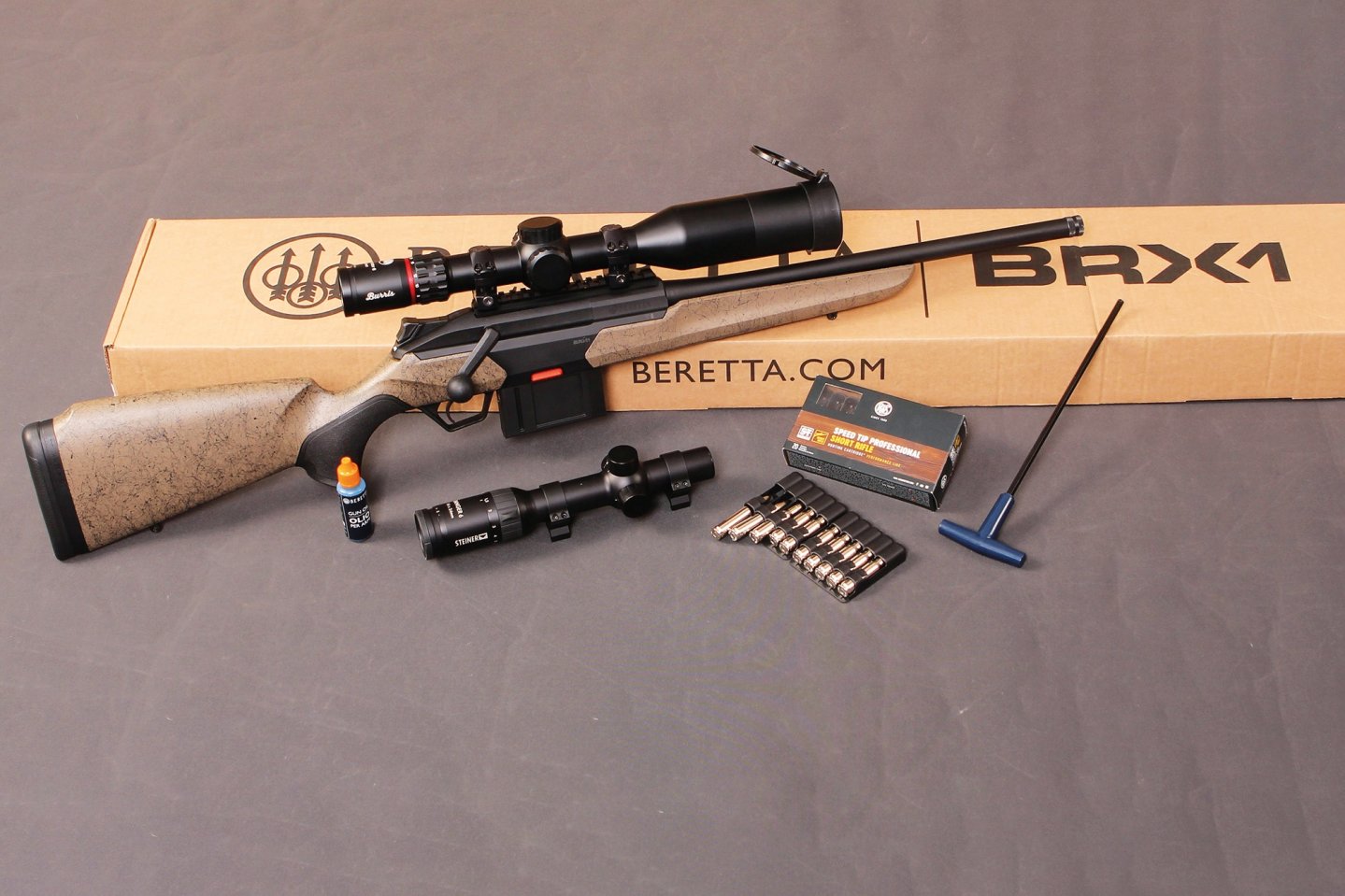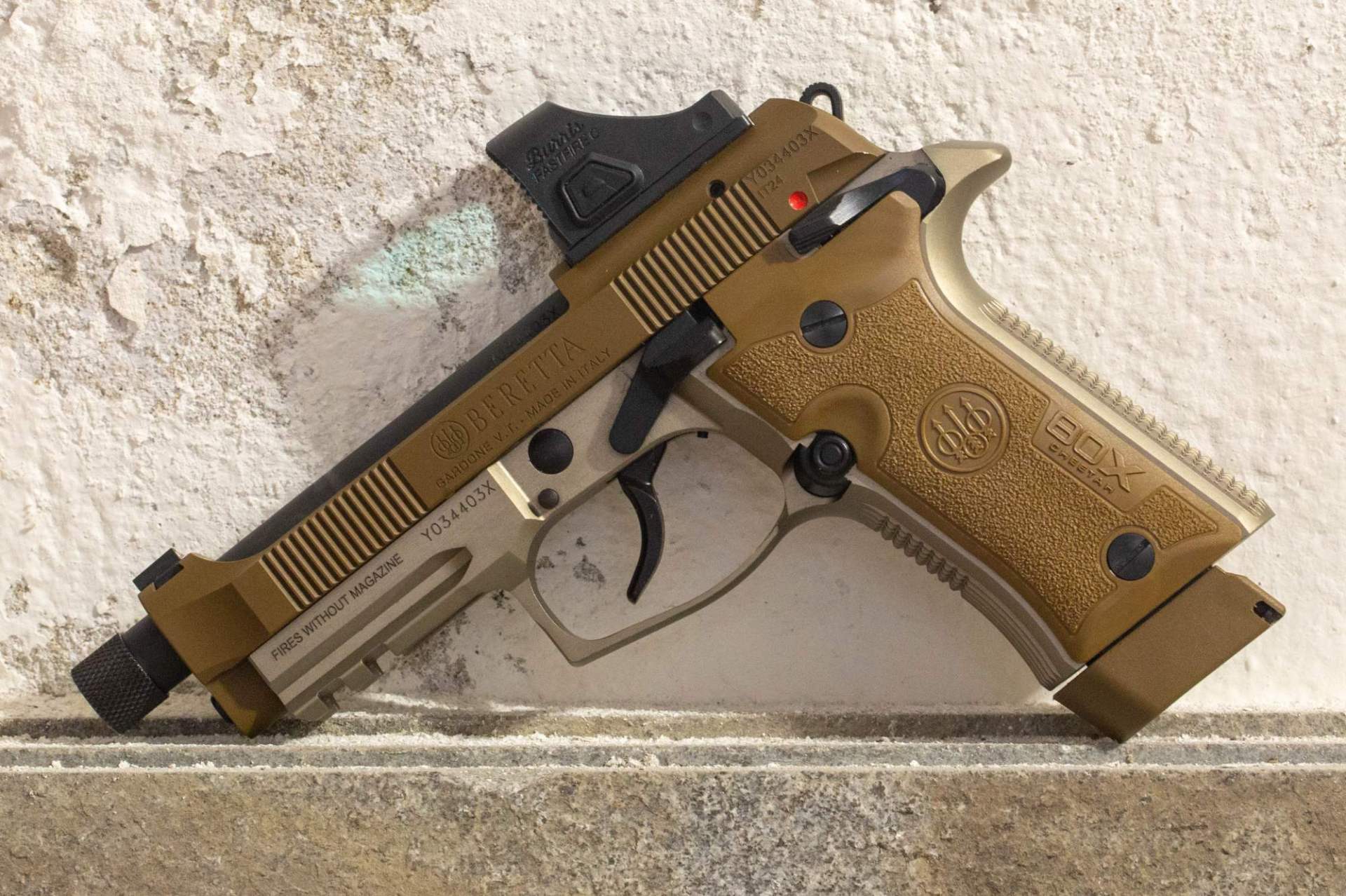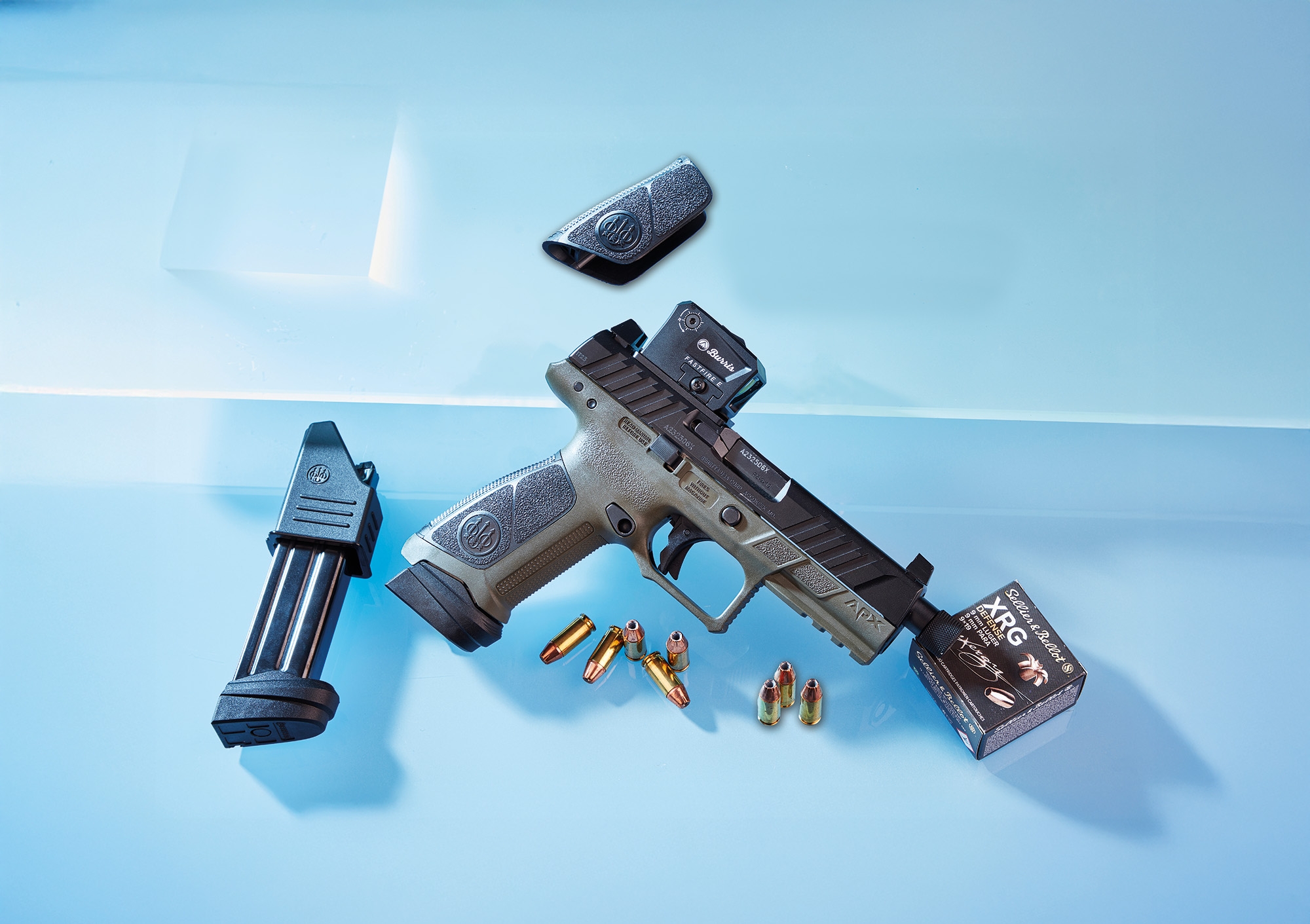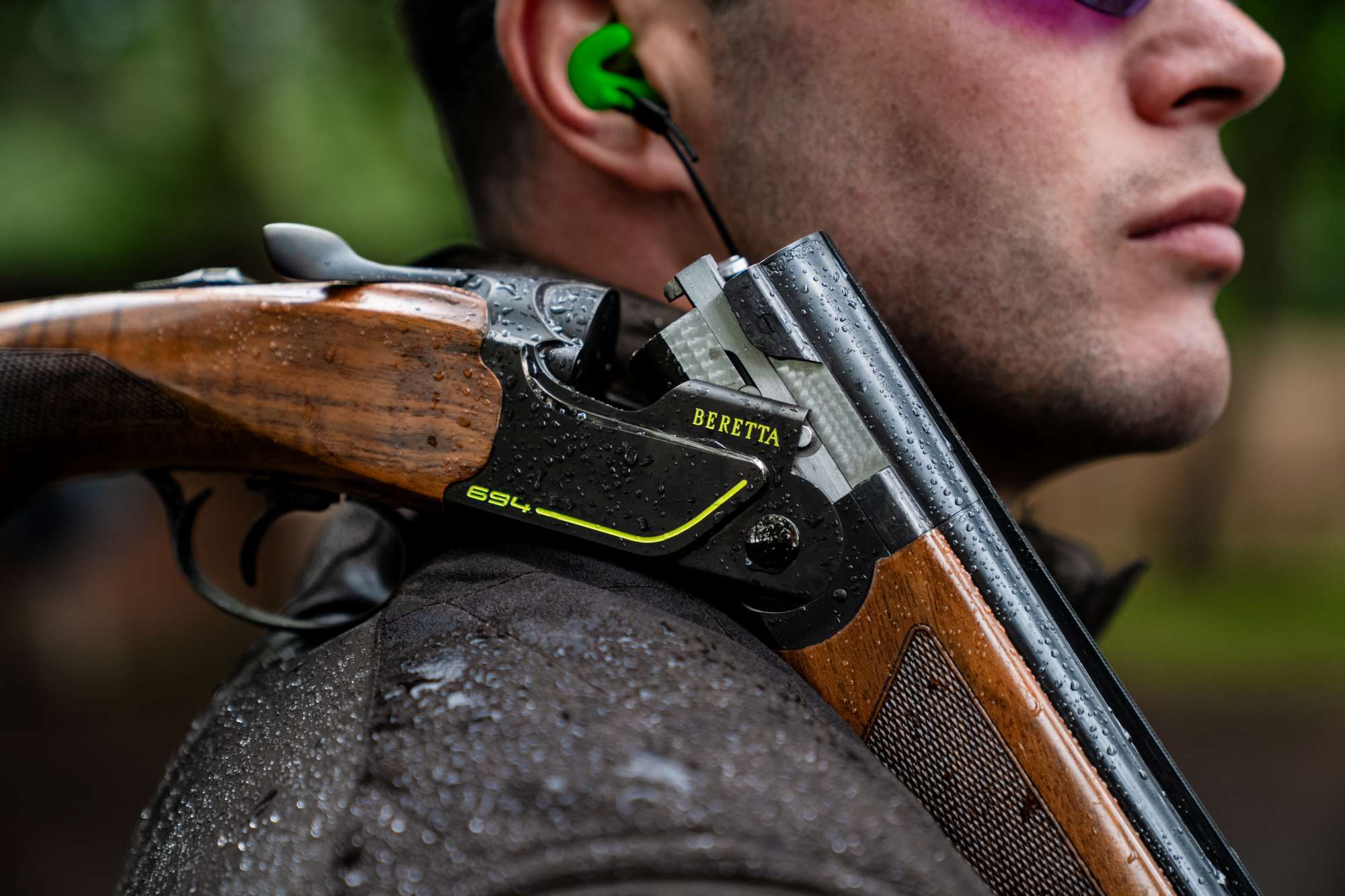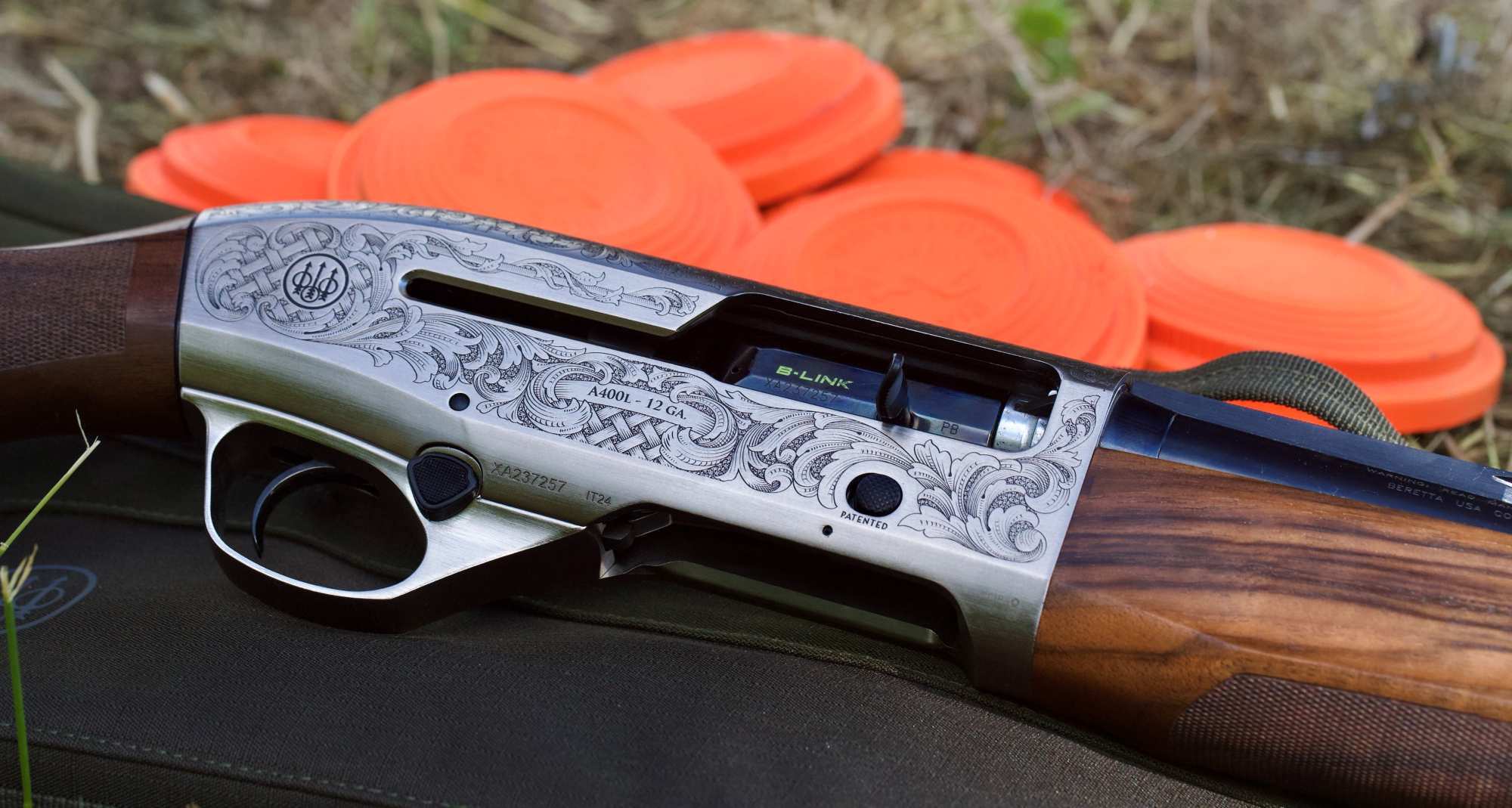The idea of a straight-pull action is not new. Around 130 years ago, Ferdinand Ritter von Mannlicher established such a design with the military model he invented in 1895. Straight-pull rifles have been popular for hunting for around 30 years and can now be found in the catalog of almost all gun manufacturers. The well-known Italian gunmaker Beretta has been producing such a firearm for several years with the BRX1 model. After all4hunters.com had already presented the basic model and other variants some time ago, here comes the new Ranch version in .308 Winchester for a practical test.
Beretta BRX1 Ranch: A proven design with an aluminum chassis
The centerpiece of the BRX1 series, and therefore also of the Ranch variant, is an aluminum chassis that accommodates all of the gun's components. The bolt body is guided through grooves in the chassis. It locks using a rotating bolt head with eight locking lugs, familiar from Beretta's ARX series assault rifles. (If you take a closer look at a Magnum variant of the BRX1, you will find a double row of 16 locking lugs on the bolt head). Thanks to the modular bolt design, the head can be easily replaced when changing caliber. One feature of the BRX1 is that it can be converted for left-handers within seconds. All you have to do is reposition the bolt handle and turn the bolt head so that the case is ejected to the left. Admittedly, the fit of the bolt handle is quite generous, even if the resulting play does not impair the function. The ball screwed onto the bolt handle should also be mentioned: It can also be replaced if necessary. The typical three-position safety of the BRX series, designed as a cocking slide, is located at the rear and top of the bolt housing in the form of a small bump. It can be moved into the respective position using the thumb and a spring-loaded catch.
The three-position safety of the BRX1:
- Back: Total lock position, carrier and trigger locked
- Middle: Partial lock position, trigger locked
- Forward: Firing position, carrier and trigger free
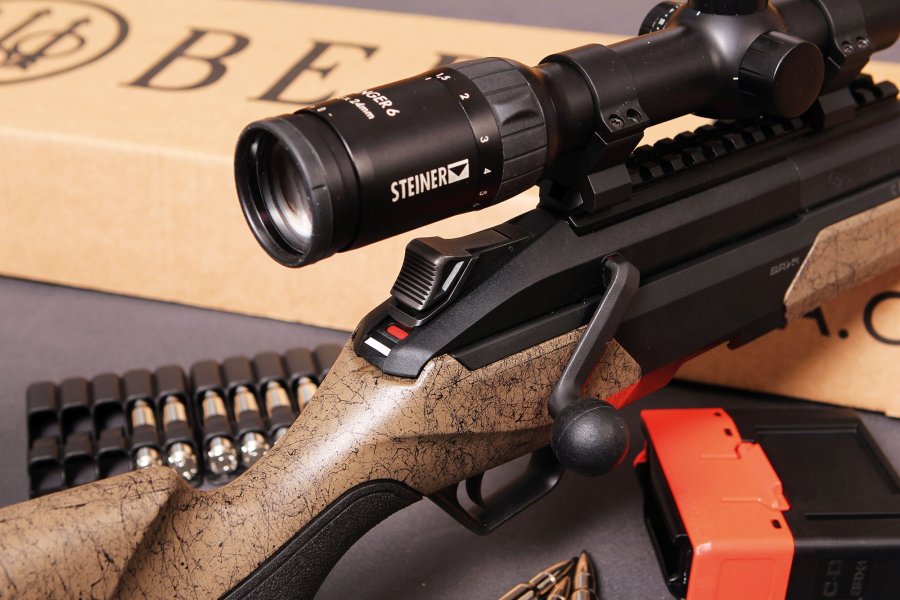
The trigger group can be easily removed from the chassis with the bolt and magazine removed. The user can then set the trigger weight in three stages from 950 to 1,500 grams. The test gun was fitted with a fairly crisp direct trigger with minimal pre-travel and creep. Its advantages are not limited to the adjustable trigger weight, but also extend to the fact that the rather filigree trigger mechanism can be easily cleaned or maintained thanks to its simple removal. The barrel support with inserted recoil lug is located at the front of the chassis; the free-floating barrel itself, which is fitted with a screw-on Picatinny rail, is held in place by two hexagon socket screws accessible through the stock. Changing the barrel is simple: open the bolt, loosen the fastening screws using the key provided and remove the barrel. If you use interchangeable barrels with their own optics, there is no need to re-zero thanks to the Picatinny rail firmly screwed to the barrel. The BRX1 Ranch is available in barrel lengths of 41 and 46 cm, each with a twist rate of 1:10" and fitted with a 5/8-24 muzzle thread protected by a knurled protector. The contour of the barrel tapers slightly from the reinforced chamber area to a diameter of 19 mm. Beretta uses cold-hammer forged barrels; a look inside with the borescope revealed a mirror-like surface without any machining marks. The Ranch version does not have open sights, nor are there any threaded holes for screwing on sights. All aluminum and steel parts are matte black anodised or blued.
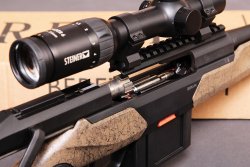
Ammunition is fed from a ten-round magazine, which is locked by means of latches on both sides. It can only be removed by pressing the buttons on both sides at the same time, so it is almost impossible to lose it when hunting. The upper part of the polymer magazine, which is inserted into the magazine well, is bright orange in colour – if the magazine should fall to the ground, it is easy to find even in poor light and amomg leaves. The buttstock and forend are also bolted to the aluminum chassis, as is the pistol grip. The stock parts are made of polymer, are hollow on the inside and are torsion-resistant thanks to appropriate reinforcements. This also applies to the forend, as even strong lateral pressure on it does not cause barrel contact and the associated accuracy problems. Thee buttstock ends in a screw-on extralight recoil pad and spacer, and there are different spacers and pads for customisation. The pistol grip, which is also interchangeable and has a non-slip surface, has a slightly steeper feel compared to the other BRX1 models. A special coating on the stock parts results in an extremely grippy, eye-catching surface. Studs for QD sling swivels are provided for attaching a carrying sling.
The short barrels of the Ranch version make the gun very compact and save weight. On the test specimen with a barrel length of 46 cm, the scales read 3,200 g, unloaded and without scope. The short barrel makes the Beretta very easy to handle, even with a silencer fitted. Although not every silencer is the same length, the gun remains easy to handle overall. However, the short barrel does not only have advantages, ballistically you have to make compromises. Typically, the muzzle energy E0 of a 42-cm barrel is around 15 per cent lower than that of a 10-cm longer barrel. With a .308 rifle like the Ranch, this means an average of around 3,000 joules at the muzzle. However, the ballistic losses are hardly reflected in hunting, as tests with various barrel lengths have shown: The loss of V0 and E0 is in a range that can be neglected at the shooting distances common in Europe. One phenomenon remains that you have to live with with short barrels: some powder does not burn off in them, as demonstrated by impressive muzzle flashes when shooting without a suppressor or without the muzzle brake available as an accessory.
Testing the Beretta BRX1 rifle
So the first route to the accuracy test was at 100 m. A Burris Eliminator 6 riflescope was mounted on the Picatinny rail using Tier One brand rings: the high-tech flagship of the US optics manufacturer offers 4x to 20x magnification with a 52-mm objective lens diameter, making it ideal for achieving tight groups and later use on the hunting ground. Pre-zeroing by means of a boresight, zeroing was quick and easy. The considerable muzzle flash was immediately noticeable – a flash suppressor should at least be screwed on when hunting in the evening.
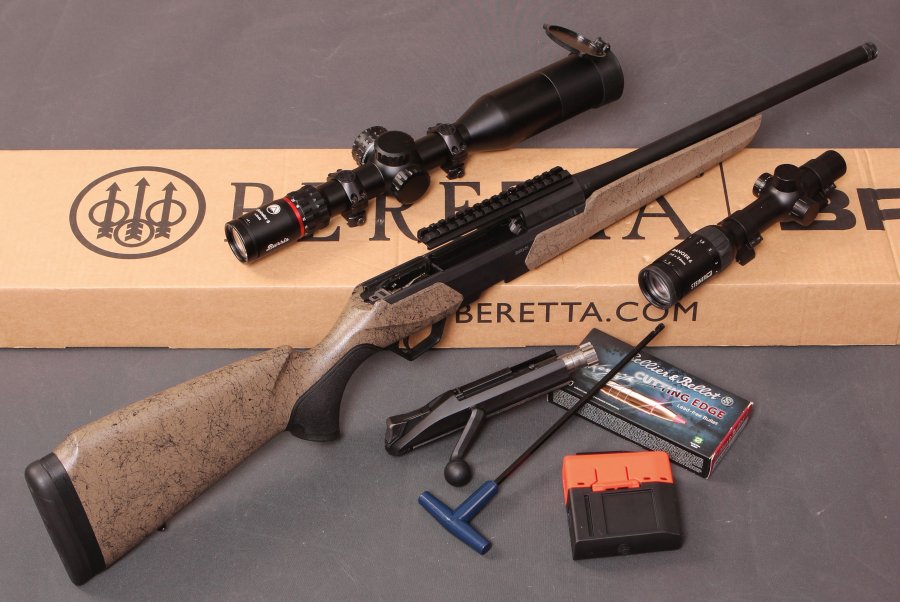
To determine the shot groups at 100 meters, the testers used ammunition with different bullet weights in leaded and lead-free versions. None of the five-shot groups with hunting cartridges exceeded a circle diameter of 40 mm. The front-runner with 27 mm was the lead-free RWS Evolution Green Short Rifle with a bullet weight of 9 grams (139 grs). But the short BRX1 also cut a fine figure with sporting ammunition: with the Hornady BTHP Match (168 grs), consistent groupings of around 25 mm were achieved. The Beretta showed a preference for medium-weight bullets.
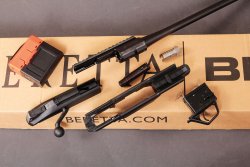
The BRX1 Ranch was then taken to the shooting cinema. A Steiner 1-6x24 telescopic sight was fitted and zeroed-in. Even when dry firing, Beretta's experience in the gun field is noticeable, the rifle is well balanced and the stock fits perfectly in the firing position straight away. Practice is needed for repeating, as the bolt travel is surprisingly long. If your head is to remain on the stock, concentration is required to avoid inevitable swerving or contact with the bolt moving backwards. The head should deliberately remain in the rear area of the stock, otherwise the smooth process of reloading and holding the target image will be severely interrupted. Some other straight-pull rifles are better at this, but the almost effortless opening and closing of the Beretta bolt makes up for it. It runs as if on the proverbial rails, almost without effort and without any jamming. Only closing the bolt and feeding a cartridge from the magazine into the chamber requires a little pressure. The gun reliably ejects fired cases to the right; no feeding or ejection problems were encountered in the cinema.
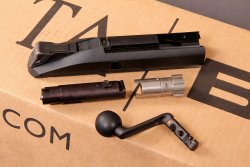
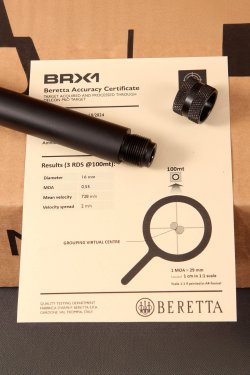
The shooters present particularly appreciated the Beretta BRX1 Ranch's stock shape and the intuitive shooting position. No wonder that after a short familiarisation period, the results when shooting on the move gave no cause for complaint. Equipped with the Burris Eliminator, we then went hunting in the mornings and evenings in our local hunting grounds. The short dimensions and low weight made a positive impression on the way to the hide. And due to its short length, the rifle was also easy to manoeuvre in a narrow blind. Switching from the left to the right window went smoothly, without any noise and without bumping into anything.
But where there is light, there is also shadow, because there was one thing I didn't like about the short Beretta: the safety was difficult to operate silently. Mechanically and tactilely easy to operate from both sides, it takes a lot of practice and a special technique to quietly move the safety slide from "safe" to "fire" . The thumb should always keep the spring-loaded pusher of the slide under tension and only release it slowly only after overcoming the upper position, thus lowering it into the fire position. This doesn't just sound complicated, it is complicated without practice. So, what was inevitable happened: when a buck was in sight, when the safety was released there was a "clack" that could probably be heard for kilometers in the dusk – the buck acknowledged it with a simultaneous flight and the tester with an unprintable curse. The rifle was tested in the spring, but the BRX1 Ranch is designed for driven hunts. And, as we all know, most of this takes place at the end of the year. So the only way to judge this type of hunting is by the impression gained from a visit to the shooting cinema. As this was more than positive, apart from the issue of the long bolt travel: the BRX1 Ranch will certainly prove itself in practice.
Beretta BRX1 Ranch technical specifications
Model: | Beretta BRX1 Ranch |
Caliber: | .308 Winchester |
Capacity: | 10+1 rounds |
Overall Length: | 980 mm |
Barrel Length: | 460 mm |
Twist Rate: | 1:10" |
Trigger Pull Weight: | 950 to 1,500 g |
Weight: | 3,200 g |
Left/Right Version: | Customisable for right and left |
| Price (RRP): | $1,669 |
| Features: Straight-pull rifle with modular design and polymer stock, detachable polymer magazine, muzzle thread, adjustable trigger pull weight, interchangeable barrel option. | |
Beretta BRX1 Ranch test wrap-up
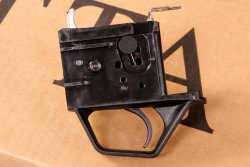
The final verdict is good, even if there are a few drawbacks. These include the long bolt travel and the well thought-out, but practice-intensive safety in terms of quiet operation. The Beretta designers should make some improvements here. The scope of delivery also seems rather sparse; in addition to the key required to change the barrel, there is a small bottle of the company's own gun oil – and that's it. The testers would have liked a second magazine and at least an instruction manual, but these were only available as a download from the Beretta website. But the bottom line is this: anyone looking for a modern, rugged gun for many hunting occasions will find what they are looking for with the BRX1 Ranch and will get a gun that can be easily customised for all options thanks to its modular design.
For more information please visit the Beretta website.


